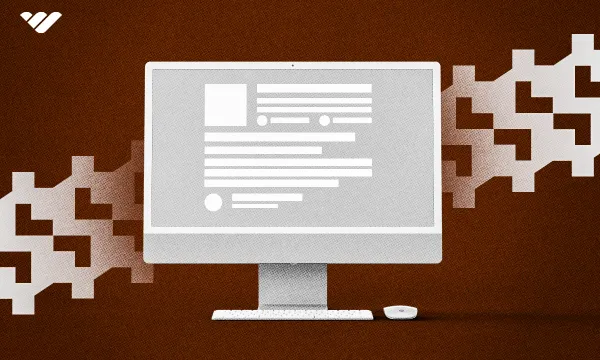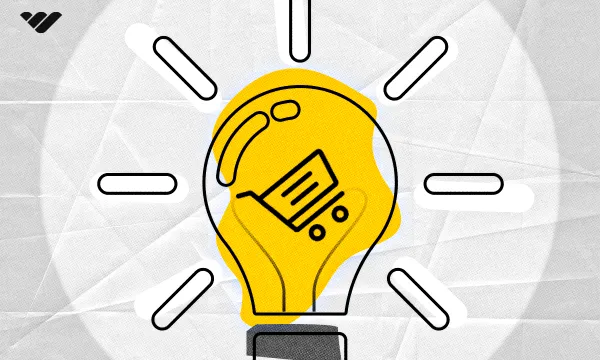Software as a Service, or SaaS is a thriving industry. It was worth just $31.4 billion in 2015, and by 2022 the industry had grown to a worth of $1617.1 billion. As more and more tasks are being performed electronically, and people rely on their smartphones and computers for communication, entertainment, and productivity tasks, SaaS has become an indispensable part of daily life.
With such a huge market, it comes as no surprise that SaaS is a broad field, one that covers all kinds of applications serving both consumers and businesses in almost every industry. It's this breadth and versatility that makes the industry so full of opportunities for entrepreneurs.
In this list, we'll look at 30 of the most interesting SaaS opportunities open to developers, industry experts and entrepreneurs in 2024. From telemedicine to trading signals and productivity tools, there's something for everyone.
Want to jump ahead? Click here to go to:
- Is SaaS a Good Startup Idea?
- 30 SaaS Business Ideas (With Examples)
- How to Start Selling Your SaaS
- How to Start Selling Your SaaS with Whop
- Launch Your SaaS With Whop Today
Is SaaS a Good Startup Idea?
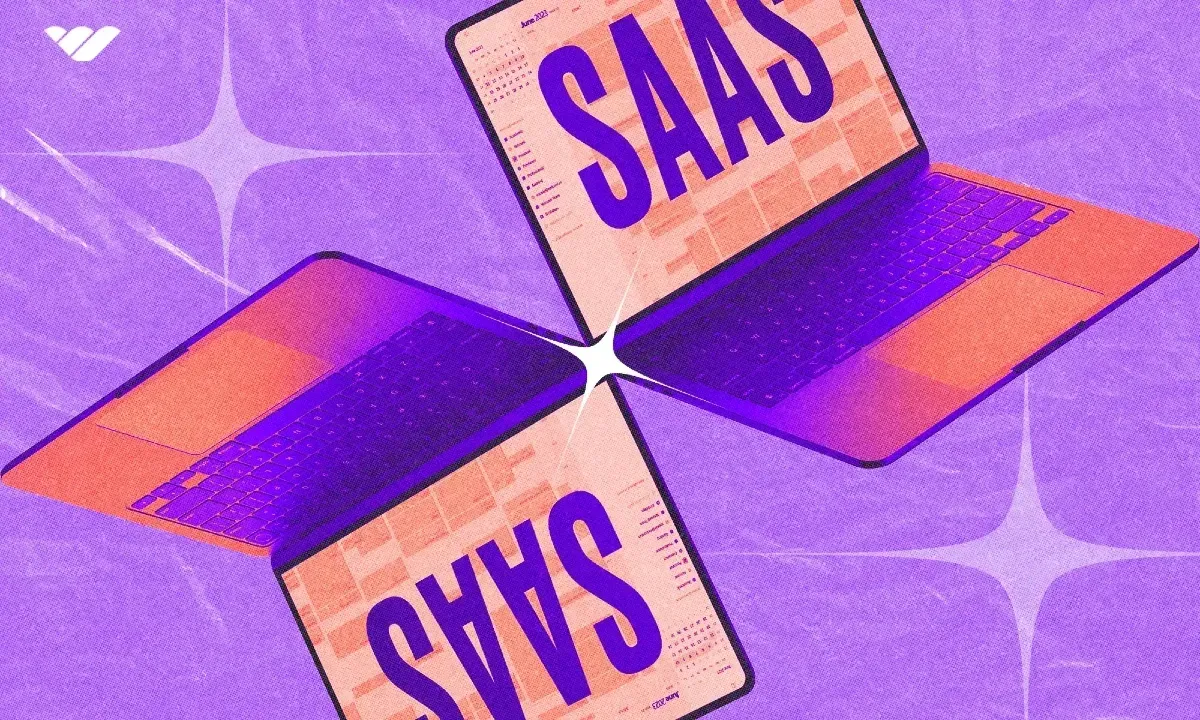
If you're looking for a way to build a sustainable income stream, launch a SaaS business could be a perfect option. SaaS startups are relatively low-risk, so you can test out your idea without having to worry about the expenses and overheads associated with a traditional brick-and-mortar business.
Before we continue, let's look at 7 benefits of creating a SaaS business.
SaaS Has a Low Barrier to Entry
Launching a SaaS business costs comparatively little compared to many other business ideas. Depending on your own background, the technical side of getting your SaaS product working could be a challenge. However, this isn't always the case. It's possible to resell some SaaS products, use turnkey solutions, and simplify many of the aspects of development with built-in integrations.
For example, Whop handles membership/subscription management, payment processing, MoR/sales tax compliance, and unlocking access to your product, so you don't have to reinvent the wheel when it comes to monetizing your app.
If things don't work out, you've got no costly leases to break and no shop fixtures, fittings, and stock to worry about. If you're renting a server or cloud resource on a long contract, you can simply repurpose it for another idea.
Work From Anywhere
Running a SaaS business gives you the freedom and flexibility to work from anywhere in the world, at any time. You're not tethered to an office. You don't have to meet clients in person or stick to someone else's schedule. The digital nomad lifestyle will finally become a realistic option.
As a founder, you'll have a lot of work to do. You may find yourself wearing many different hats as you're in charge of the marketing, doing the development work yourself or guiding the developers, and even answering customer service emails. However, you can set your hours and do that work from anywhere that has an Internet connection.
Another, related benefit of having a SaaS business is that you'll have a monthly income that will come in even if you take a break for a while. With consulting, coaching and other similar businesses, you only get paid when you deliver your service. If you want a holiday or you're unwell for a little while, that means you're not earning money for that time off.
However, SaaS businesses aren't 100% self-sustaining. You need to keep the servers running and support your users. Still, they are a reliable income stream and as long as you put some effort into maintaining them they will generate you a reliable income. You can take that holiday and not have to worry about where next month's income will come from.
The Freedom to Scale, Grow, and Pivot
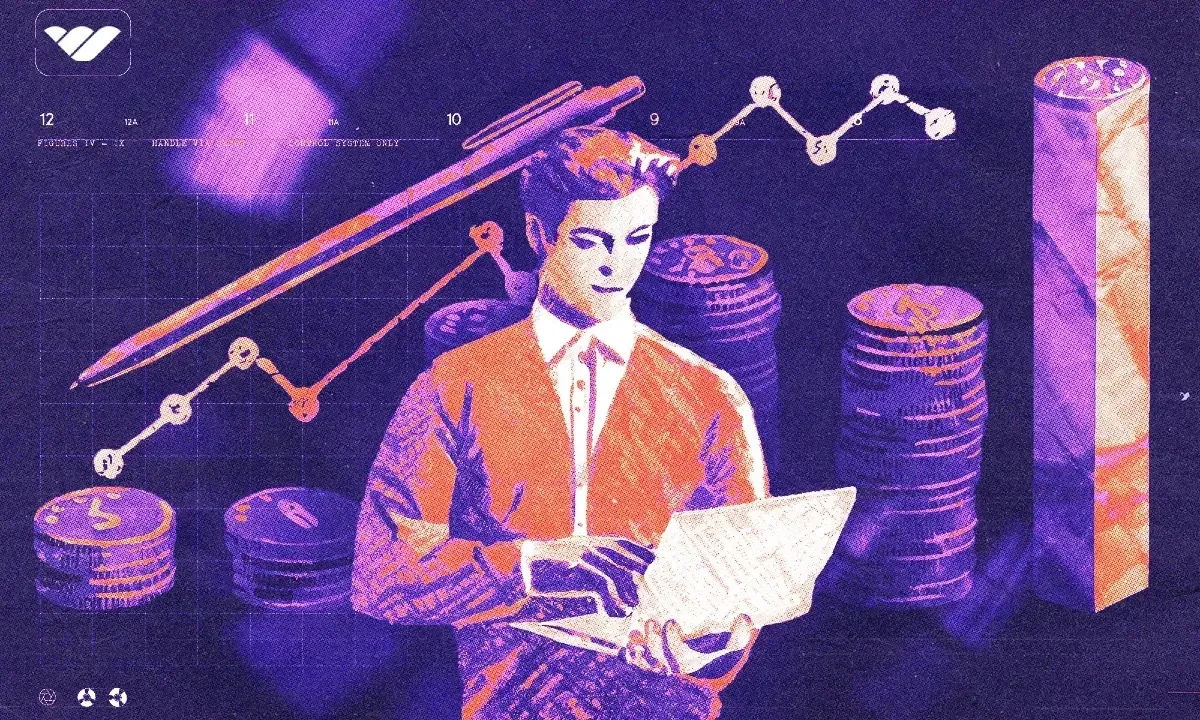
When you launch a SaaS product, you have the chance to start small and grow as quickly or slowly as you'd like. You can solicit feedback from your users, and take your app in whatever direction they'd like to see it go.
Being virtual, SaaS products can be tweaked, altered and changed based on market tastes and even your mood. So, if you've got something that's popular in one vertical, you could translate it to another vertical, growing your potential audience almost overnight.
Some SaaS developers dream of becoming the next Salesforce or Facebook. Others are happy to stay small or focus exclusively on one particular industry. The choice is yours. If you're the sort of person who likes to seek out new challenges, you'll find the freedom and flexibility of being a SaaS entrepreneur liberating, as you can try new ideas quickly, with minimal risk.
Customers With a High LTV
A SaaS product targeting enterprise customers can bring in a stable, reliable income. These clients tend to have a high lifetime value, and once they've found something that works, they'll stick with it.
Monetizing users in the B2C space can be harder, as consumers have been conditioned to expect certain products and services for free. But it's still possible, with the right ideas. Come up with a good idea, deliver it in an easy-to-use package, and ensure your service is reliable, and you'll have a monthly income stream that you can depend on, even if you take a short break from selling your products.
Enjoy Global Reach

One often overlooked benefit of SaaS offerings is that they can have a global reach. If you're running a brick-and-mortar store, or delivering in-person services, you're limited to your local area, putting a cap on how much you can earn from your ideas without launching a franchise.
SaaS products can be used by anyone, anywhere. There's the challenge of localizing them, but this is something that can easily be overcome. The profits you earn from people in your home country can be funneled into paying for translations so those in other countries can also benefit from your product.
An Alternative to Traditional Software
Many SaaS innovators started their careers as traditional software developers making games or desktop applications. They moved to SaaS partly because it offers a way for them to get a stable revenue stream. Traditional applications are vulnerable to piracy. SaaS, being an account-based subscription model, makes it harder for people to cheat the system and access the application without paying.
What's more, SaaS generates a stable income. If people like your product or service, they can pay a small monthly fee to access it and get updates and support as well. As long as they want to use the product, they'll have to pay that fee. With traditional software, people can pay once and they'll have access to the product forever, so there's not much stopping them from using an old version for many years if they don't need updates.
As a developer, SaaS makes sense as a way to keep earning a steady income.
No Technical Experience Required
While the nuts and bolts of operating a SaaS business do require technical expertise, it's entirely possible to be a SaaS entrepreneur without a technical background. In fact, it can often be an advantage. Developers and engineers don't think like end-users, and this can backfire when they try to make something that non-technical end-users will be interacting with.
People who have a background in a specific industry know what it is others in that industry are looking for. If you're aware of a gap in the market and can describe and explain that gap in a way that other developers will understand, you can hire a developer or look for a technical co-founder to make your vision a reality.
30 SaaS Business Ideas (With Examples)
Now that you understand why creating a SaaS product is such a great idea, let's look at the type of SaaS that you could create by outlining successful SaaS examples.
Here, we look at some of the most interesting and innovative SaaS ideas to consider in 2024.
1. Marketing Automation
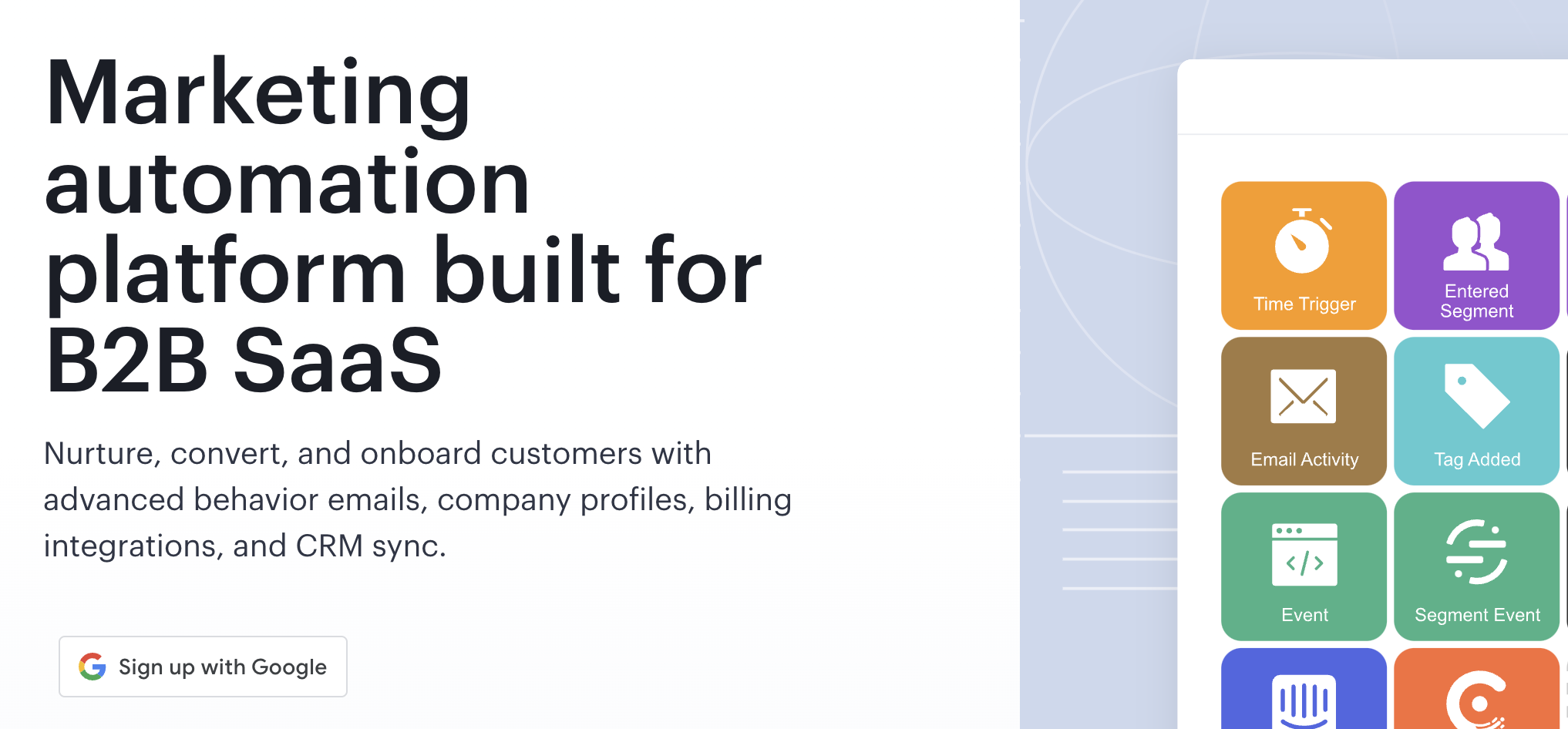
If there's one area that can benefit from creative use of SaaS applications, it's marketing automation. From lead generation to communication, SaaS applications can save marketers a huge amount of time and effort.
One example of a popular marketing automation app is Encharge, which collects customer data from other apps, and automatically sends out the right messages to those customers or prospects, based on where they are in the sales funnel.
If you're good at working with third-party APIs and processing data, turning those skills into a marketing automation SaaS application could generate an ongoing revenue stream.
2. Social Media Content Creation
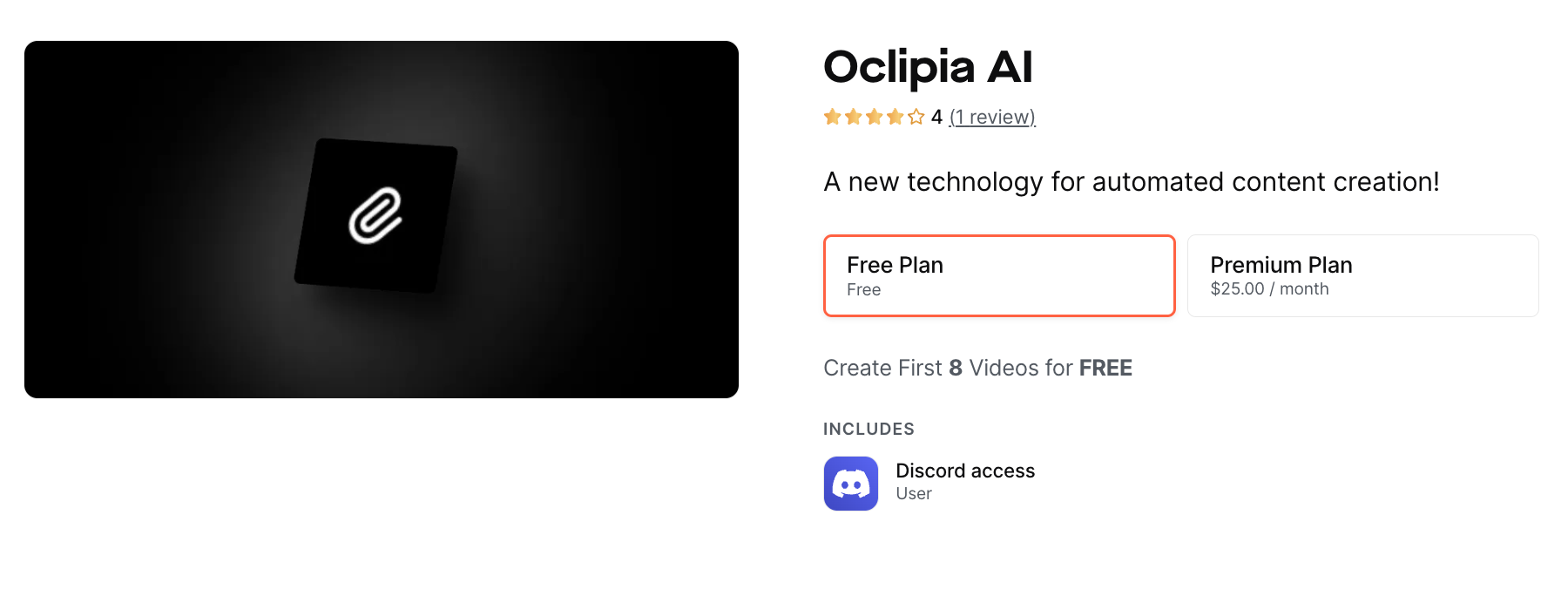
Today, brand owners are expected to have a presence on social media. However creating content for social platforms is time-consuming, and not all business owners are creatively inclined. The increasing focus on video content makes life even tougher for time-strapped brand owners.
AI-powered social media content creation apps such as Oclipia AI, available on the Whop marketplace, help brand owners create high-quality videos backed with custom voices and songs. It's never been easier to create engaging TikTok videos that could go viral.
SaaS applications for social media content creation use modern machine learning models to generate images, captions and even text-to-speech narration. Simply feed them an idea for a theme, and the apps will turn that idea into polished, sharable content in seconds.
3. Content Planning
Consistency is key for online marketing. Brands, and individuals, need to share content regularly to keep readers and viewers interested. One challenge creators face is coming up with fresh ideas for content, especially after the first few months of running a blog or website.
SaaS apps for content planning help creators figure out what keywords to use for SEO purposes, and what content to share when.
Answer the Public is a great example of a content-planning app that helps creators find out what questions people are asking about a given subject. Simply enter a keyword and it'll present a long list of questions related to that subject, which can be used as a starting point for blog posts and articles.
There are many other content planning SaaS applications focused on keyword research, timing, and even linking suggestions. Even with the wealth of apps currently available, there are still opportunities for developers who can create a SaaS application that's easy to use and comes up with quality content suggestions.
4. Social Media Analytics
SaaS apps to help brands better manage their social media are very much in demand. From sentiment analysis to tracking engagement, influencers need to gather a lot of information about the way their audiences are engaging with their social media profiles. The analytics provided on-platform aren't always easy to use, and having a SaaS application that brings together the information users need all in one place is invaluable.
Platforms such as HubSpot combine analytics with post scheduling, team management and other useful tools to help creators save time and manage their profiles more effectively.
5. Collaboration and Teamwork

Slack, Trello and Teams are all household names, proving how invaluable collaboration tools can be. But not everyone needs the breadth of features available in these applications. More focused SaaS applications that do one job well, such as time tracking or group to-do lists have a chance of carving out a strong place in the market.
From online kanban boards to video conferencing and project management, SaaS technologies can help with all kinds of collaboration and teamwork tools. The collaboration software market is expected to reach a volume of $16,12 billion by 2028, with most of that revenue coming from the United States, making it a lucrative industry to be involved with.
6. Time Tracking
Time tracking deserves it's own mention in this list, as it's a vital tool for freelance workers looking to streamline their invoicing, and other individuals who are hoping to improve their productivity. Launching a SaaS application targeted at a specific niche, such as time-tracking for athletes, or practice-tracking for musicians, could help build a loyal community.
The time-tracking desktop app marketplace is already quite competitive, but fewer apps track mobile activities or that makes it easy for freelance workers to log the time taken by offline jobs. Time tracking is also something many small businesses use to ensure they're paying their employees accurately. Many businesses still rely on paper logs or outdated software applications that may not work well or integrate with modern payroll systems.
Anyone who can offer a compliant, reliable and modern solution to the challenge of time tracking could become a major part of the workflow of many independent workers and small businesses.
7. Gamified Tools
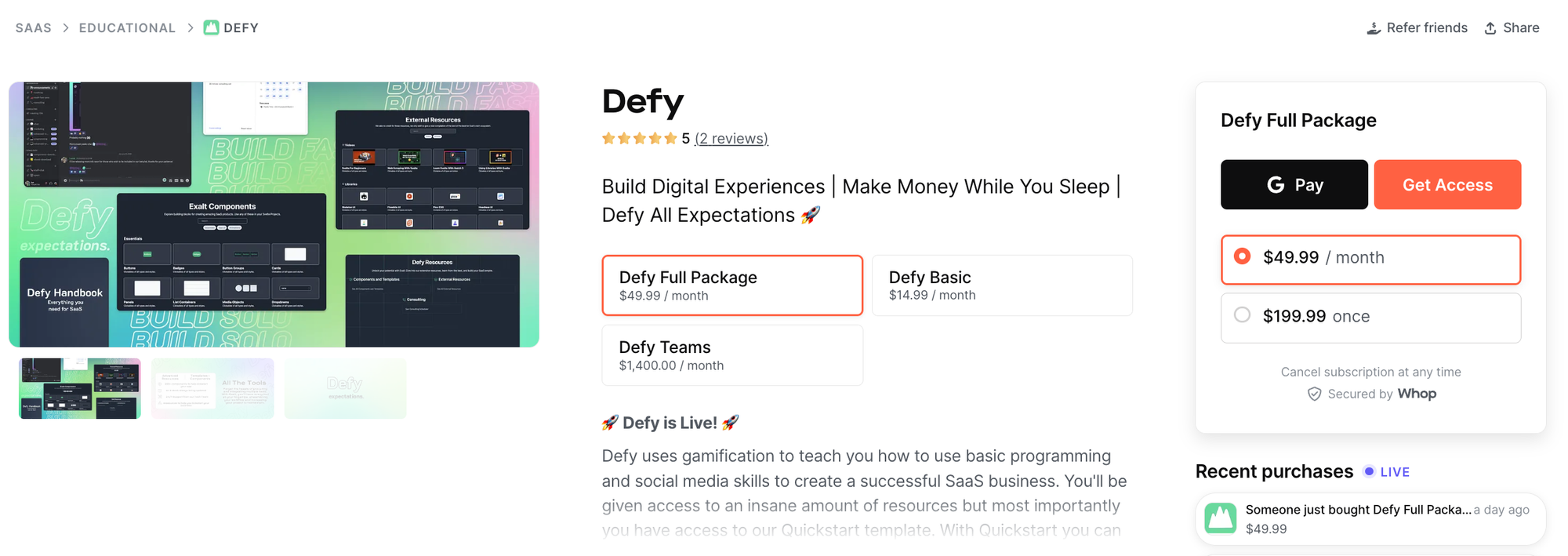
Gamification is a great way to motivate people, whether that's to help them learn new skills or stick at difficult goals. Many of the most popular apps include gamified elements, from the leaderboards in DuoLingo to the challenges in Habitica.
Defy is a popular app on the Whop marketplace that uses gamification to teach people who to build a successful SaaS business, making it a great example of a gamified teaching tool, and a handy way to help would-be SaaS entrepreneurs learn the skills they need to take any one of the ideas in this list and turn them into a successful business.
Gamified apps often use a subscription business model, helping you earn a predictable income from your app ideas.
8. App Testing and Feedback
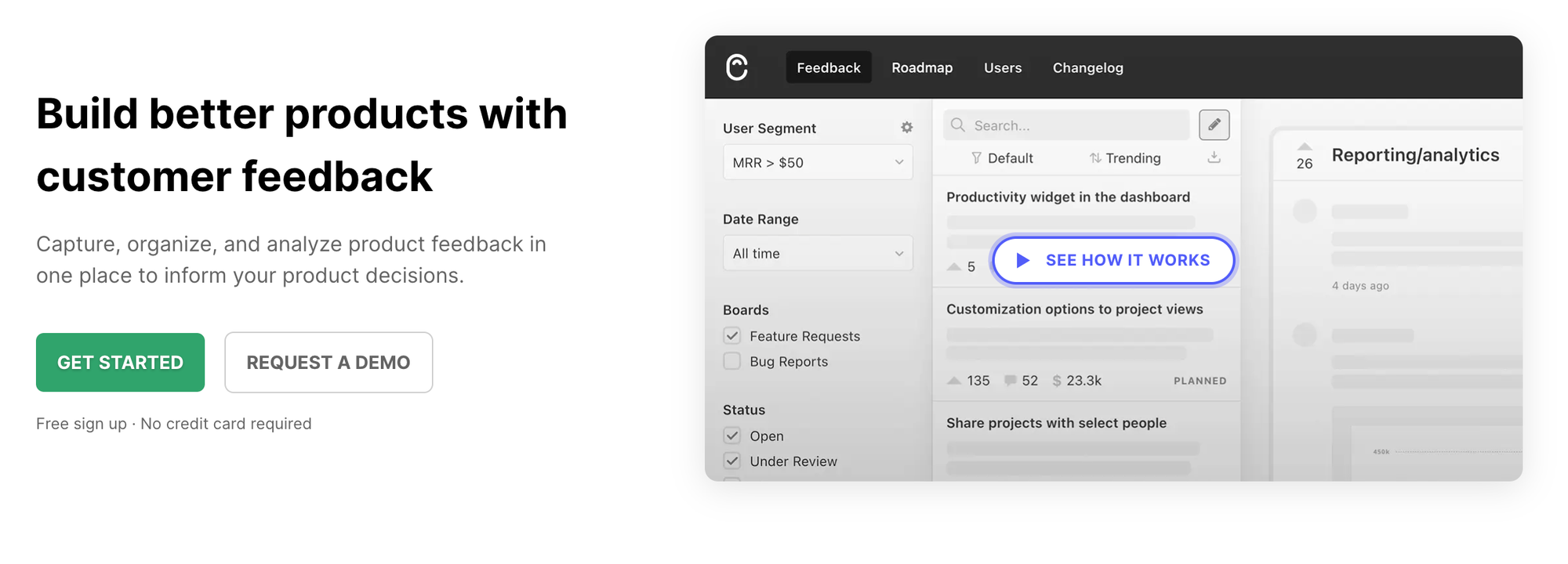
There's an app for everything today... and what do those apps need? Testers. Canny is a SaaS application that integrates with your existing workflows, and helps you collect feedback about your apps. It serves two purposes; firstly, it turns users into testers who can provide high-quality feedback about feature requests, bugs, and areas of the app that are simply confusing to use. Secondly, it helps reduce the burden on your tech-support team.
When people can quickly and easily provide feedback on the apps they're using, and your developers and QA team can verify and act on that feedback, everyone wins.
As a SaaS entrepreneur, targeting the B2B market with reliable, easy-to-use and intuitive feedback tools for mobile apps or even other SaaS applications could help you earn high-value subscribers.
9. Consumer Feedback Collection
At some point in your dealings with big businesses, you've probably received a text message or an email saying "how did we do?" after a hotel stay or a customer service all. That message probably sent you to a third-party website to ask questions about your experiences. That website is a prime example of a popular, useful, and relatively simple SaaS application.
If you're looking to bootstrap a SaaS application, customer feedback forms, surveys and ratings apps are an ideal starting point. They're very much in demand, and they're apps that serve a single, clearly defined purpose, so it's relatively easy to create a minimum viable product. That's not to say the launch should be taken lightly. As with any other product, it's vital you ensure it's reliable, polished, and offers the features your users need, but it's something you can get up and running relatively quickly, with minimum danger of feature creep.
10. Site Builders and Storefronts
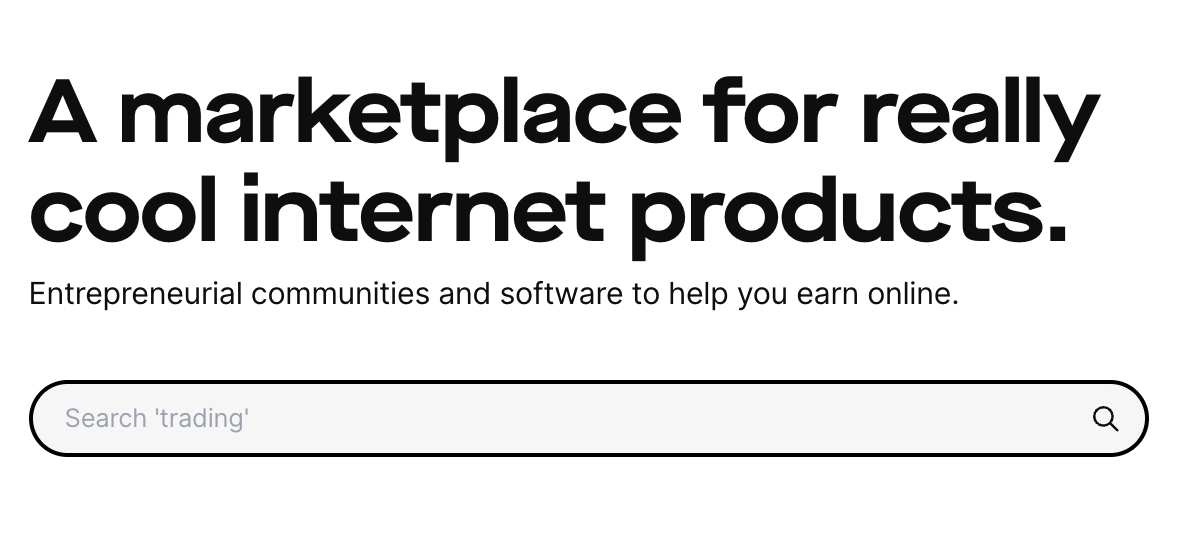
Every brand needs a website. You may be thinking that the market's saturated with site builders today, with WordPress at the technical end of the marketplace and platforms such as Wix at the entry-level. However, these are one-size-fits-all options. There's still a market for vertical SaaS providers who can offer industry-specific site builders or online storefronts - like Whop offering an all-in-one platform for sellers of digital products.
This kind of vertical-focused SaaS application is a golden opportunity for someone who has expertise in a specific industry to turn that expertise into a business that will generate steady, sustainable income.
11. Document and File Sharing
DropBox, OneDrive, FileCloud and other similar applications are handy forms of cloud storage and can be used for sharing files too. However, there are many situations where someone might want a simpler, more ad-hoc way of sharing a file with a group of people.
Simple file-sharing SaaS applications to facilitate quick, low-friction document sharing can serve as a handy application idea for a would-be SaaS entrepreneur and can be expanded upon over time to add other collaboration features.
Once people get used to using your app for their file-sharing needs, it'll become a habit, helping maximize their customer lifetime value. All you need to do is offer a smooth user experience and good download speeds.
12. Payment Management
The goal of SaaS applications is to make life easier for people, whether that's in their day-to-day activities, or running their business. Payment management is one area of business admin that can be time-consuming, frustrating and error-prone.
Applications such as Textura aim to solve that problem helping people manage their compliance needs and keep track of payments quickly, easily, and securely. Textura is a vertical-specific payment management app, focusing on the construction industry. It's likely, however, that many other industries could benefit from similar apps.
13. Feedback Management
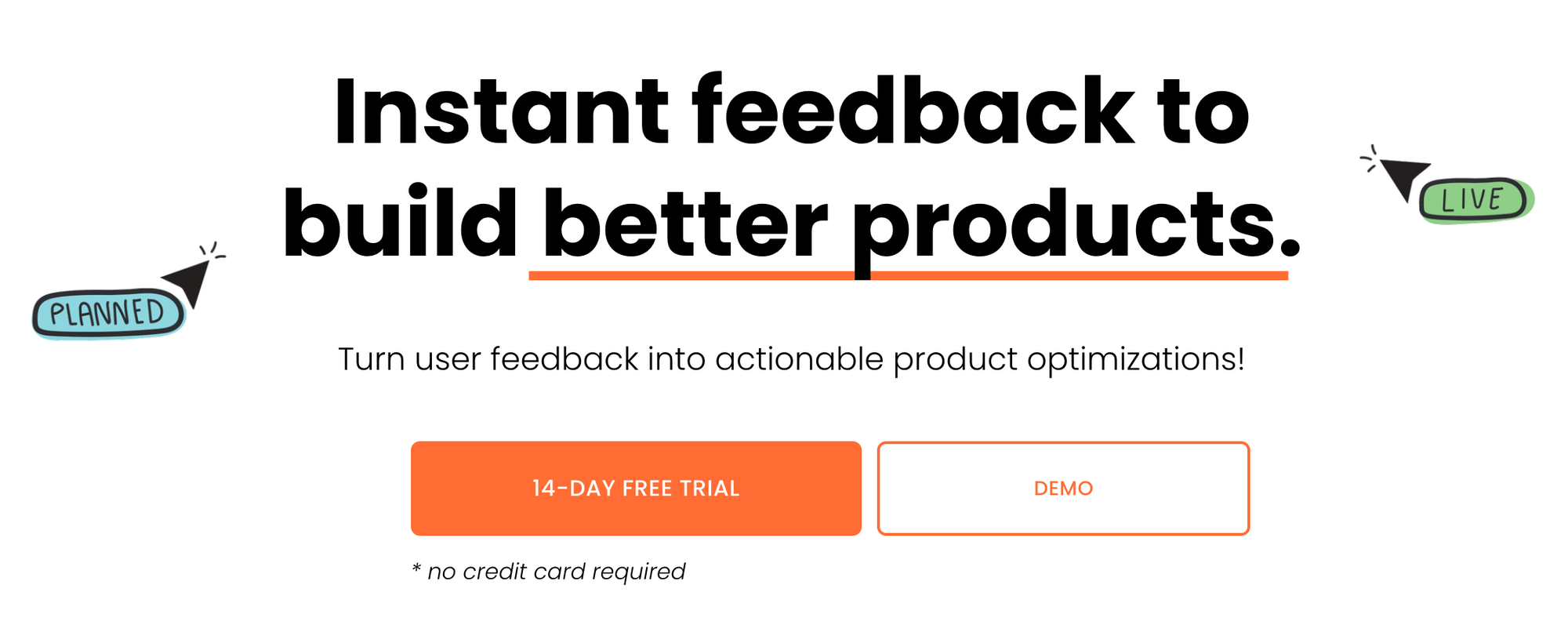
We've already looked at software testing in the form of Canny, but long-form feedback isn't always required. Upvoty is a SaaS app that collects and tallies votes. It can be used to have people vote on feature requests or other issues.
A simple UI for the voters, and powerful analytics on the back-end combine to make a tool brands will come to depend on. There are many providers offering free polling platforms, but some brand owners don't want to use a free solution that has another company's branding on it, because that dilutes their own image. This leaves an opening in the SaaS market for white-label polling widgets, as brand owners can embed these in their web pages or emails, and collect feedback without having to send users to a third-party website.
14. AI-Powered Image Creation
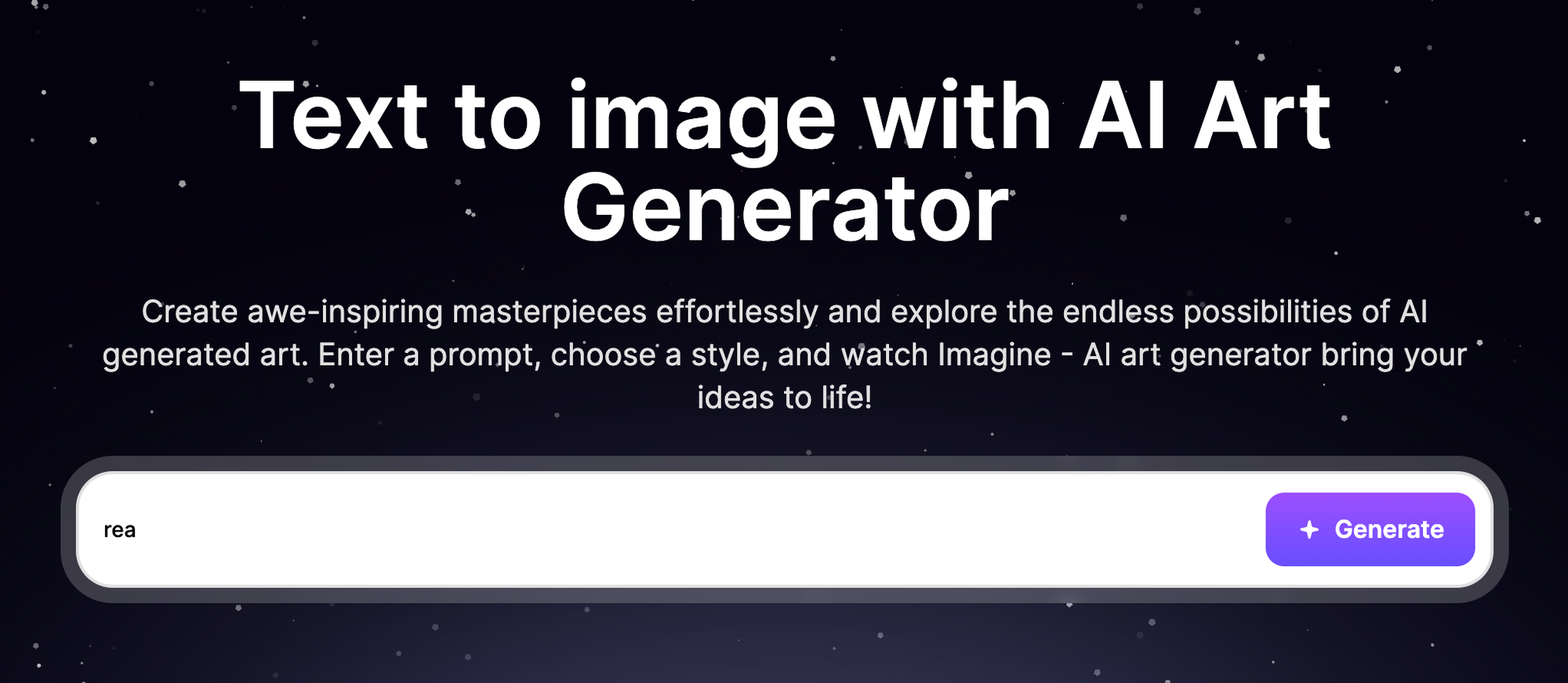
Artificial Intelligence may be the buzz-word of the day, but there's some real value behind all that hype. While it may not completely replace the entire workforce, as some expect, it's a great prototyping tool and creative aid. One area where it's got a lot of potential is for image creation.
Machine learning models can put together logos, posters and quick designs that can be refined by human artists. The challenge many people face when trying to take advantage of AI in this way is that they don't understand how to write prompts that will get the most out of the model they're interacting with.
This challenge is compounded by the way there are so many different image-creation machine-learning models on the market. Each one has a slightly different 'look' to the images it creates, and parses prompts differently too. As a SaaS entrepreneur, you have a golden opportunity to take advantage of these challenges and create something that's easy to use and produces predictable results.
15. Automated Transcription
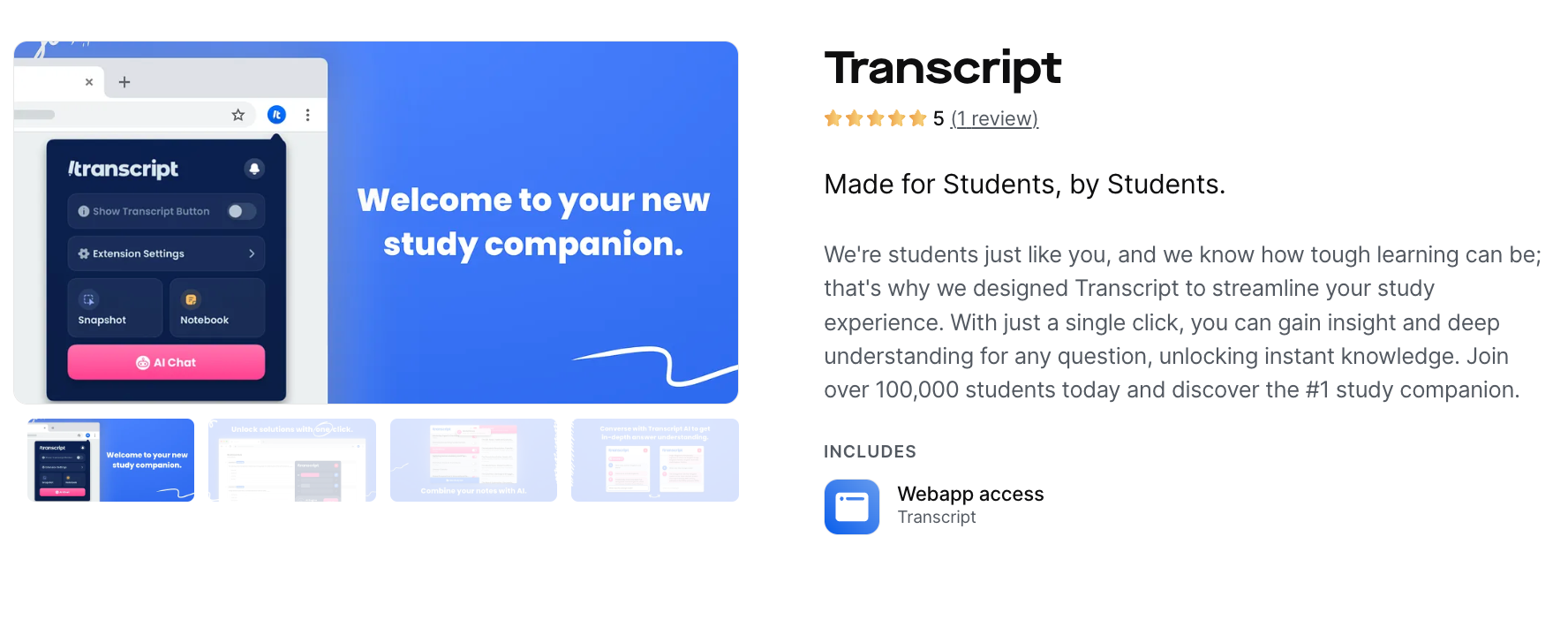
Transcription is a time-consuming, challenging job. Speech-to-text machine learning models can help people save money on transcription services, and make the job of human transcribers that little bit easier by providing them with a rough draft they can check for errors.
There are several speech-to-text models available for SaaS entrepreneurs to base their services on. These models can accept audio file uploads in a variety of formats, parse the audio for words, and provide a written transcription.
A reliable, easy-to-use transcription service could appeal to journalists, students and busy executives looking to record meetings. Whop's easy-to-use APIs make charging for transcription services a simple process, too.
16. Automated Legal Documents
From appealing parking tickets to writing out contracts, SaaS applications are ideal for performing basic legal services. This is another area where industry-specific expertise can be converted into a valuable business idea. For example, Elsie handles paperwork and licensure for genetic counselors. This is a small niche, but their expertise and reputation has ensured strong product adoption and helped them retain long-term customers.
Of course with any application that provides legal or medical advice, it's crucial to ensure proper disclaimers are in place, to protect your brand from legal issues in the event a customer uses your documents or advice in an unexpected way.
17. Freelancer CRM
CRM software helps brands keep track of customer details, bringing together information about sales calls, tickets, transactions and other issues. There's already a wealth of CRM applications on the market targeting both large and small businesses. However, many freelance workers find these applications difficult to use or feel they're not targeted well enough to their needs.
Vertical-specific CRM applications designed with easy-to-use interfaces have a chance of succeeding in this competitive marketplace. Focus on delivering an intuitive user experience, and providing easy access to the most in-demand features, and your app has a good chance of attracting a loyal user base.
18. Telehealth Platforms

The COVID-19 pandemic saw a rush of interest in telehealth, as healthcare providers were forced to cancel appointments due to social distancing requirements. In those early days, the technology to support telemedicine was not mature, but necessity drove innovation in that niche, changing the way telehealth services are delivered.
Health care providers are faced with many challenges when it comes to telemedicine. From issues with having appointment booking systems and billing systems communicate with each other, to ensuring notes make it to a patient's primary care provider, and ensuring patient confidentiality is respected. There are also challenges when it comes to usability, particularly for those in more vulnerable, older, or less-educated demographics.
Creating telehealth applications that can be used by anyone, run on older hardware, and meet modern regulatory requirements is not easy, but there's a gap in the market for those who can develop such services.
19. Automated Data Capture
Modern businesses deal with unprecedented amounts of data, and ensuring that data is recorded quickly and accurately, that it's compliant, and that people are getting the most valuable insights out of that data is essential.
Automated data capture applications provide real-time capture and processing of documents (and other data, helping business owners make the most of the information that's available to them. Companies such as Luminess have led the charge in the world of data capture, having processed over 100 million documents, proving the demand for reliable data capture solutions is there.
The most traditional form of automated data capture is optical character recognition (OCR), and modern OCR software is surprisingly fast and accurate. Providing a service where people can upload photos, forward faxes or send in PDFs to have them converted into a searchable form could present a revenue opportunity.
20. E-Invoicing
Invoicing can be a time-consuming chore for small business owners. Not only does writing out invoices take time, but there's also the task of keeping track of when they were sent out and when they're due. Automating those tasks helps save those business owners time, and helps them put forward a more professional front. Instead of having to send emails themselves, the process of invoicing and sending out reminders and payment acknowledgments can be performed by their SaaS provider.
As an entrepreneur, the value of an application that makes it easier to collect money that's owed to you is likely quite clear. It's a service that will always be in demand.
21. Email Marketing
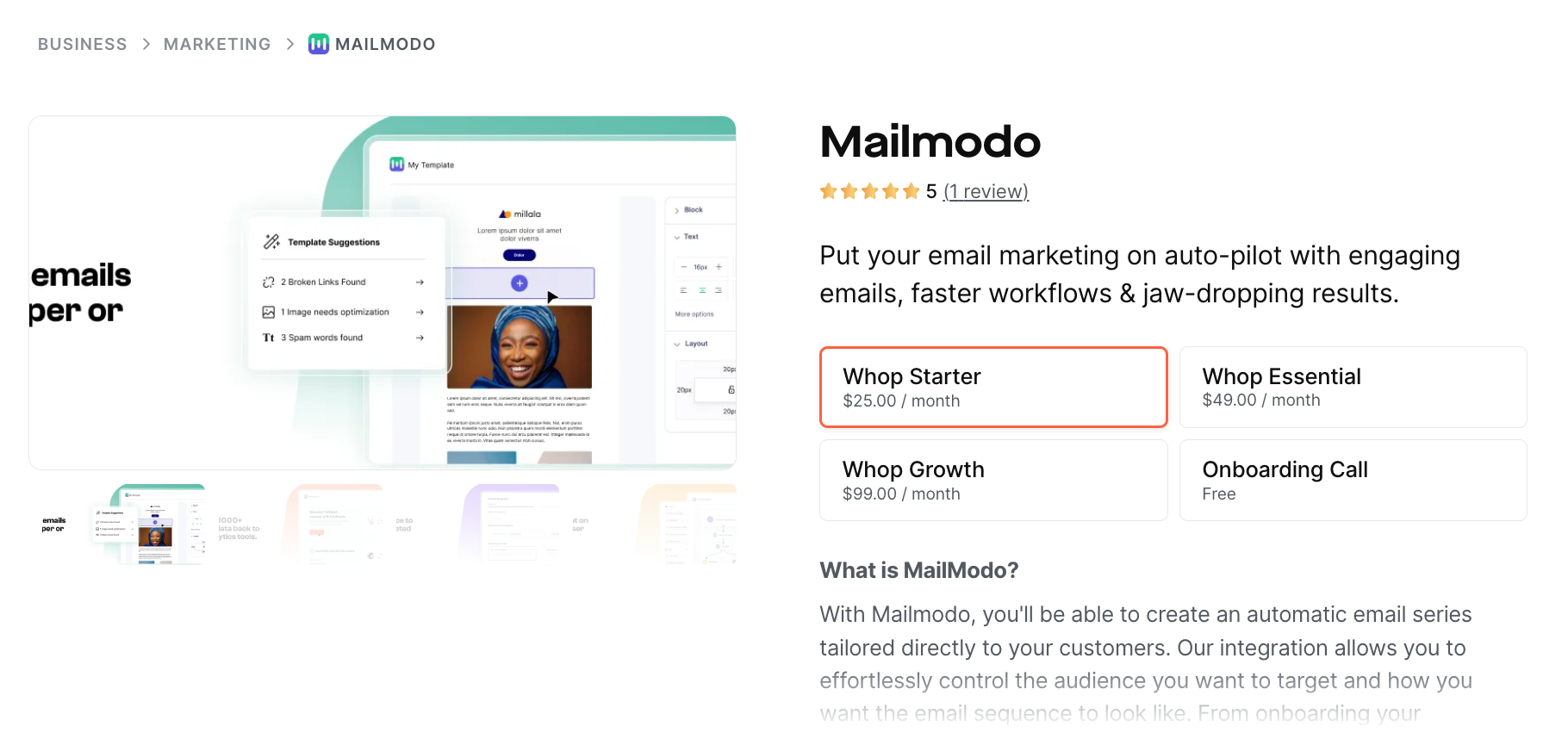
Email marketing is something most brand owners want to engage in, but it's tricky to do right. According to HubSpot, most marketers report an email open rate of around 46-50%, so around half of the emails they send simply don't get read. This could be because the recipient deletes it unread, or it could be that the email is treated as spam and doesn't make it into the recipient's inbox in the first place.
SaaS platforms to help ensure emails make it to their intended recipient's inbox, and are eye-catching enough to be opened, are very much in demand, and can generate long-term customers too. Once a marketer has gone to the effort of building a mailing list and has a reliable way of reaching those subscribers, they're unlikely to want to switch platforms.
22. Cloud Storage
An estimated 2.3 billion people make use of cloud storage platforms today. They use them to back up their photographs, videos, emails and important digital documents. Google, Apple and Microsoft offer their own cloud storage solutions, but many people (and businesses) want to store more data than their free plans allow. In addition, there's a growing movement of people who want to avoid becoming entirely dependent on one brand's ecosystems, and who would therefore prefer to keep their digital lives on a platform separate from the company that creates their mobile devices, or runs their emails.
Cloud storage apps and backup solutions are interesting business opportunities for those who are looking to run a relatively low-maintenance subscription-based service.
23. Booking Platforms
Personal trainers, tutors, physical therapists, coaches and other service providers all need a way to manage their clients. White-label booking applications allow service providers to present a professional-looking system to their clients, so they can reserve a slot on the professional's calendar, pay for the appointment, and have that time automatically reserved.
This kind of SaaS application is a great option for bootstrapping a service. Start with a simple, low-cost platform that can hook up to Google Calendars and other similar systems, and build it out with APIs and white-label platforms or subdomains with your own branding, to offer different tiers of subscriptions for your customers. Add in analytics options and basic CRM tools and over time you'll have built up a full-service vertical SaaS application.
24. Price Trackers
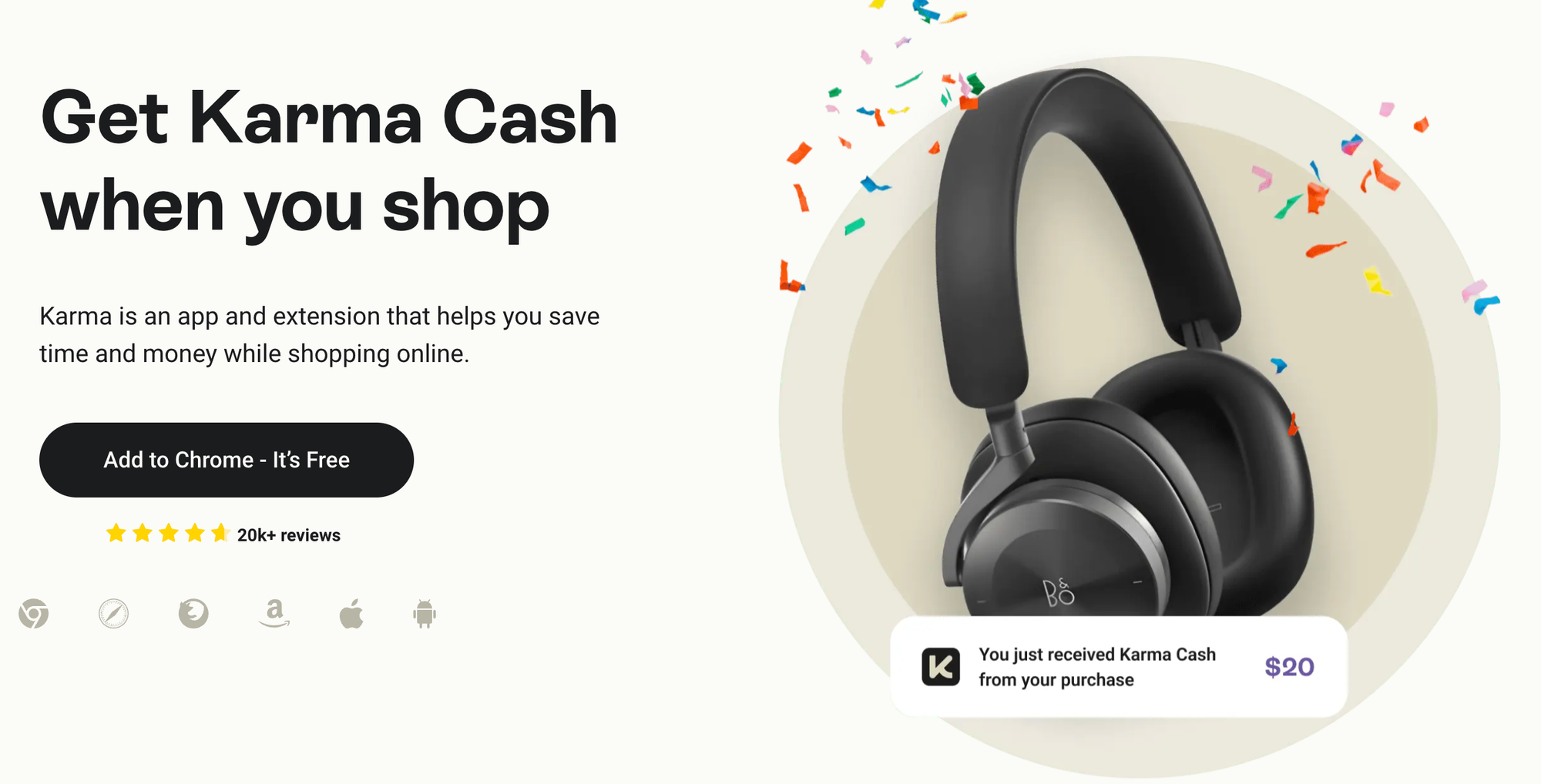
Everyone loves a bargain, and on Whop we've seen a growing number of popular price-tracking and bargain hunting applications. From arbitrage tools such as "The Early Byrd", to freebie finders such as Tweet Catcher, the entrepreneurs on our platform have created all kinds of apps to monitor websites and social media platforms to track prices or find deals.
If a website publishes an API or price feed, you can monitor it with a bot, and use that bot to alert people to attractive discounts, special offers, or items coming back in stock.
Tread carefully when it comes to scraping information from websites that don't offer a live feed. This is often against the terms of service of those websites. Attempting to gather data via scraping could lead to you getting abuse complaints to your hosting company, or having your bot banned. If this happens once your SaaS product has launched, you could find yourself with angry customers. Read the terms and conditions of any website you'd like to scrape data from, and consider contacting the webmaster before running any bots.
25. Chatbots
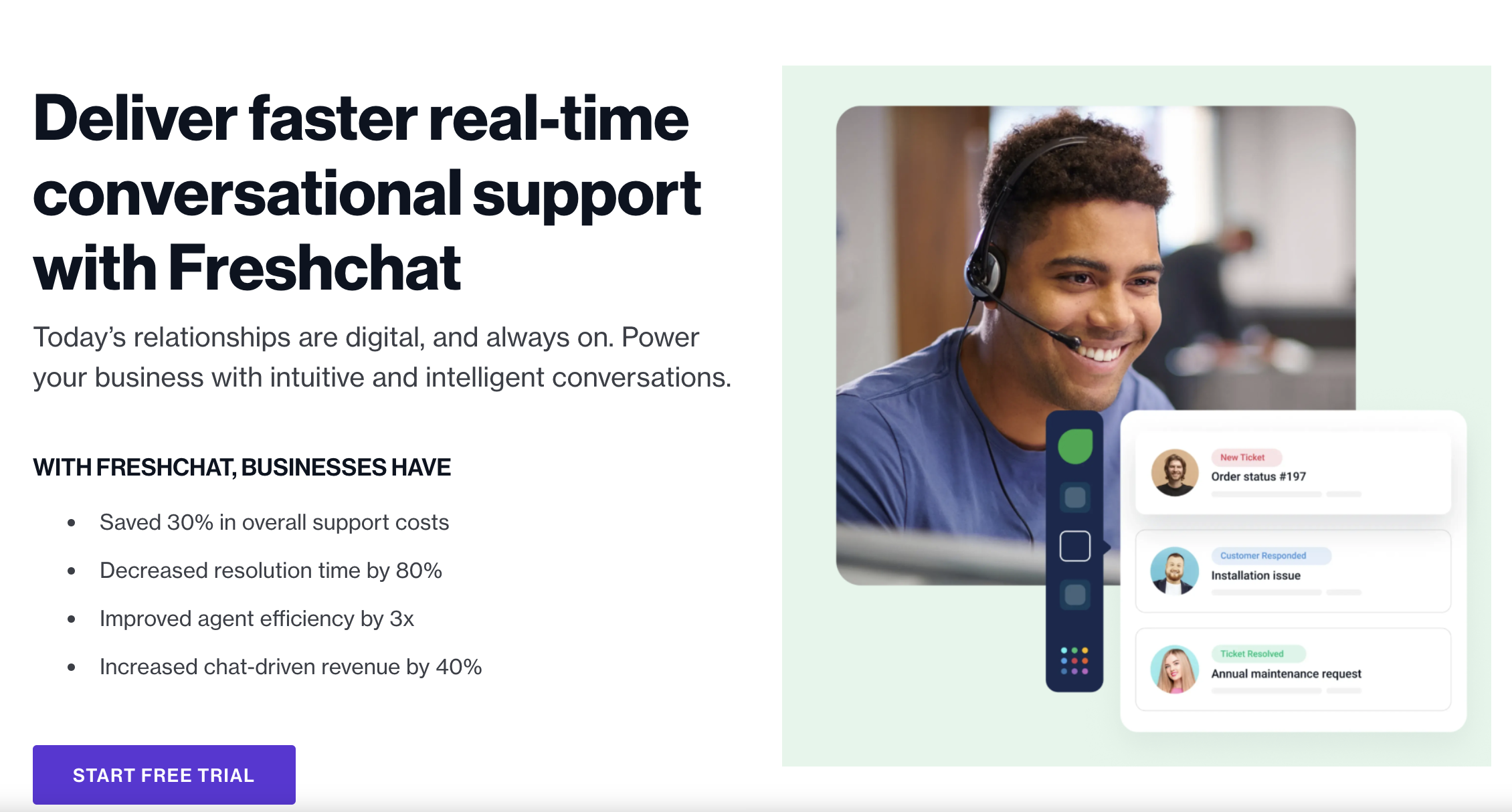
Customer service chatbots help reduce the load faced by human customer service agents. They're popular on Facebook, Instagram and other social media platforms, and as a first line form of support for live chats on websites.
Chatbots vary in functionality from basic bots that can reply only to a handful of slash commands, and more sophisticated bots with natural language capabilities. There are many machine learning algorithms out there that can be connected to customer service chatbots, and the bots can be trained with information about the business in question.
Freshchat is an example of a popular SaaS chatbot that's easy to implement and can be used for onboarding, post-sales assistance, and to provide product information.
26. Community Management
Having a thriving community can go a long way towards helping your business grow. But community management can be a full-time job. Whenever people are able to post to a group or talk in a chat room, there's the risk of disagreements and conflict. At the other end of the scale, when the group's small you may find there's not much talking going on, and this makes your group look inactive and unsuccessful.
Community managers can help with both of these issues, encouraging engagement when the group's quiet, rewarding active members, and serving as moderators too. Group Essentials is a popular Discord community management product on the Whop marketplace. It offers numerous features including:
- Deals monitoring
- Bounty system
- Moderation bot
- Event calendar with reminders
- Polls
- Affiliate links
- A user-vouching system
- Community points
Discord is a popular platform with gamers, but there are other social apps out there too that could benefit from having sophisticated community management assistance. For example, a similar SaaS bot for Telegram could attract a different, but still passionate, demographic.
27. Real Estate Listings

Real estate is something that's always in demand, and one way estate agents can differentiate themselves from their competitors is to provide a polished experience for prospective buyers. SaaS apps to help people find their ideal property, take virtual tours and ask questions about a listing are becoming increasingly popular with independent estate agents looking to compete with the bigger companies.
Whop can help SaaS entrepreneurs publish mobile and web apps for real estate, and other verticals too, so you can monetize your listing application quickly and easily.
28. Spam Fighting
Spam emails and unwanted marketing materials from subscription mailing lists are a source of much irritation for many end users. SaaS products such as UnrollMe help people keep their inboxes clean and clutter-free by parsing the emails they receive and automatically unsubscribing them from unwanted emails.
It's not just emails that can receive spam, either. In 2022, Americans received 225 billion spam texts, a 157% increase over the previous year. Applications and services to filter out such unsolicited messages could be in high demand.
29. AI Virtual Assistants
Many busy professionals use virtual assistants to do basic paperwork tasks, screen calls and emails, and handle other time-consuming tasks. AI virtual assistants serve a similar role, parsing emails to add events to a person's calendar, issuing reminders, and automating tasks such as sending out invoices and reminders. They can even screen calls or prioritize support tickets.
When most people think of virtual assistants, they think of the ones built into popular hardware, such as Amazon Alexa, Siri, or Google's Assistant. However, there's a thriving ecosystem of standalone AI assistants, and it's possible to train them with domain-specific knowledge, to create a product tailored to a given industry.
30. Trading Signals
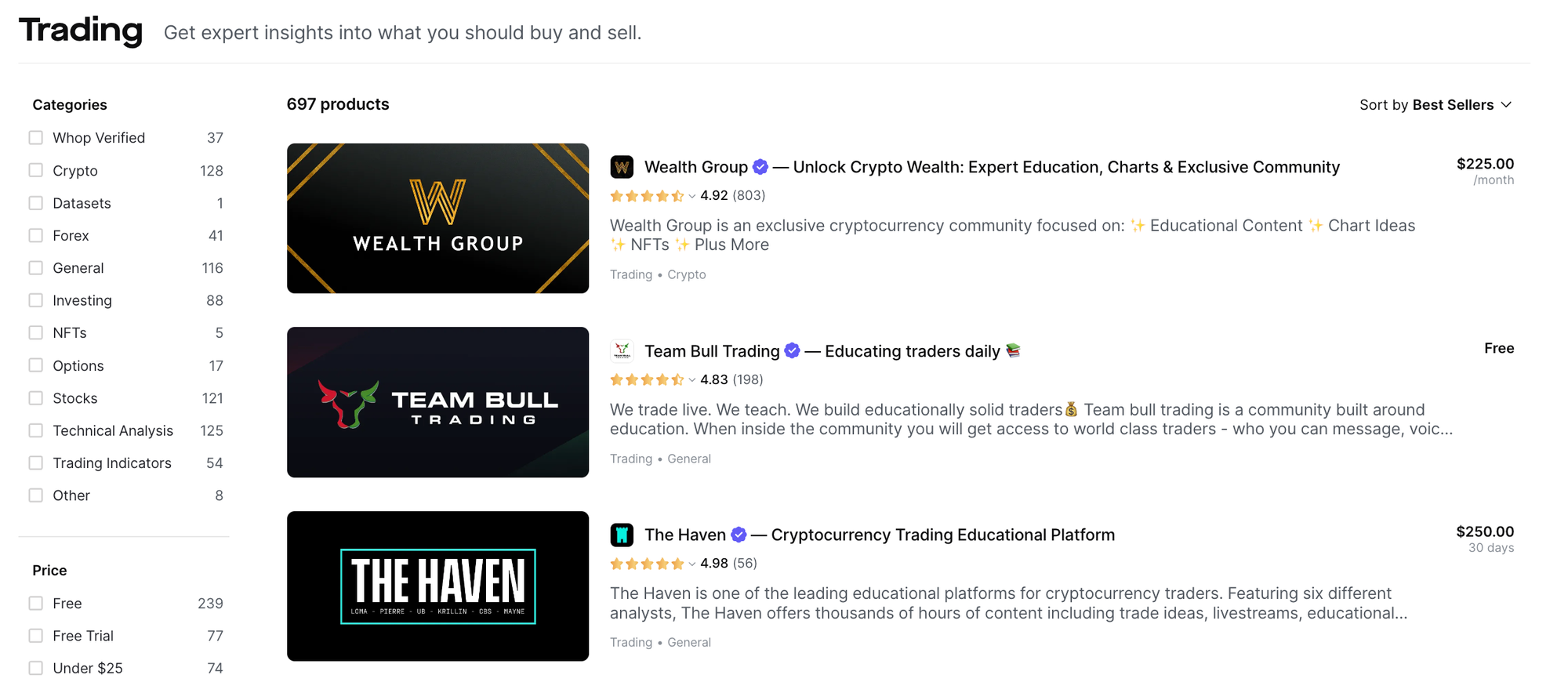
Trading signals for stocks, forex, or cryptocurrencies are often used by amateur traders to help them decide when and what to trade. Making use of these signals can be challenging for newcomers to the world of trading. SaaS apps that provide trading feeds in a clear, easy-to-understand way with minimal lag can be invaluable.
Whop offers built-in solutions for selling strategies and indicators on TradingView, so even if you don't have a dedicated SaaS app, you can still sell your knowledge of trading to your audience.
How to Start Selling Your SaaS
The above list is just a quick overview of some of the potential SaaS products an entrepreneur could launch to build a sustainable and predictable income. If the idea of selling a SaaS app is something that appeals to you, the first thing to consider is which niche you'd like to serve.
If you have experience in a different industry, what problems did you encounter while working in that industry? Could an app help solve those problems? What issues do you have in day-to-day life that you think could be mitigated by an app or website? If you can think of an issue, it's likely others are having similar problems. Solve that issue and you'll have a ready-made audience of people interested in your product.
If you're a developer, or you have a developer on your team, you'll be well-positioned to make a prototype and test it yourself or with a few family members and friends. If you're not a developer, the process of getting a working app could be a little more challenging, but it's worth investing in a high-quality product. You may be able to use an existing turnkey application or open-source solution (with appropriate licensing) as a starting point for your work, but you must consider accessibility, usability, and SEO when designing your application.
SaaS Businesses Still Need a Business Plan
There's an often-repeated statistic that 90% of all businesses fail, and this applies to the SaaS industry just as much as other industries. Around 10% of all start-ups fail during the first year, and between years two and five around 70% of startups will fail.
SaaS businesses have a head start compared to brick-and-mortar businesses because they have a lower barrier to entry and lower overheads. However, they still need to generate revenue to succeed. All too often, SaaS startups run into trouble because of a lack of market demand for their product.
Before investing in development, launching a live server, and running a marketing campaign, be sure to do some market research.
- Is there a demand for the product you're offering?
- How much would it cost to run the app?
- How much are people willing to pay for the product?
- Is it a one-time need, or an ongoing need?
- Can your product grow and reach new audiences, or is the level of demand fixed?
- Is the demand seasonal, or ongoing?
If you can answer those questions confidently and accurately, you'll be in a good position to start working on your product and thinking about your marketing campaigns, compliance, billing, and other issues.
Patience is Key With SaaS Businesses
The hype surrounding the SaaS industry makes it easy for people to fall into the trap of thinking that when you launch a SaaS product, all you have to do is sit back and wait for the revenue to flow in. Few developers are so fortunate. If you've done your market research, carefully tested your application, and found a loyal audience to begin with you may have a small audience of users straight away, but it can take a long time to gather enough data to be sure whether your SaaS idea is a good one.
As the saying goes, it can take years to be an overnight success. If you're sure your SaaS idea is smart, and you've got faith in the product you've built, be patient. Budget carefully, try to keep your overheads as low as possible, and invest in developing and marketing the most important features of your product.
Treat your early users well, and listen to their feedback. They're the ones who are using your product every day, and they'll be able to advise you on what will make your product more desirable to a wider audience.
Identify the High-Value Customers
In any business, it's ideal to have a few high-value customers who know what you're worth, are willing to pay it, and truly appreciate your product. Paradoxically, those high-value customers are often less demanding than the price-conscious customers who choose lower-tier products.
If you're offering your product for free, you may find your time and resources are tied up with support requests from people who expect a premium experience but aren't willing to pay for it. If you charge a nominal fee, you'll weed out many of those customers, saving yourself time and bringing in a small income for it. Offer a more premium subscription tier with some extra features and perhaps access to personalized support, and you could earn a lot more from a handful of customers on that tier, while keeping your server resource consumption to a minimum.
Whether you decide to start a B2B or a B2C SaaS business, you'll need a way to handle the billing process, and potentially a marketplace to draw attention to your product.
How to Start Selling Your SaaS with Whop
When your SaaS product is ready, there's only one thing left to do - start selling it! And the best place to do that is right here on Whop.
Whop is a next-generation marketplace for internet entrepreneurs that helps people sell all kinds of digital products, from courses and ebooks to videos, community memberships, and apps. It is a powerful, flexible solution that makes it easy for anyone to make money online. The platform offers a variety of templates so entrepreneurs can launch their products with just a few mouse clicks, including:
- Software apps
- Sports betting picks
- Web apps
- Trading view indicators
- Community Memberships
- Turn a website into a web app
More technical entrepreneurs can use the Whop API to integrate the platform's billing and membership systems with their existing SaaS applications. The flexibility and power of the platform is unmatched.
If you'd like to sell your SaaS product online via Whop, the process is simple:
- Register as a seller.
- Choose a name for your store, and optionally add a Twitter account to link to it.
- Choose the primary type of product you're selling. It's possible to add more product types later, but you'll need to pick one primary product type to begin with.
- Choose set up a product:
- Click Browse Apps.
- Choose the app type that matches your product most closely.
- Let's assume you've chosen to embed a website in a Whop app, perhaps the simplest way of launching an app on the Whop Store.
- Choose the category that best suits the app.
- Click Open App
- Add the URL for the website.
- Set the price.
- Add a product description.
- Your product is ready to go live!
Selling on Whop is free, and the platform takes just a 3% fee on all sales. You can list as many products as you like, and if the product type or app you'd like to connect to isn't already supported by the platform, just contact the team for assistance. New integrations are being added all the time.
Launch Your SaaS With Whop Today
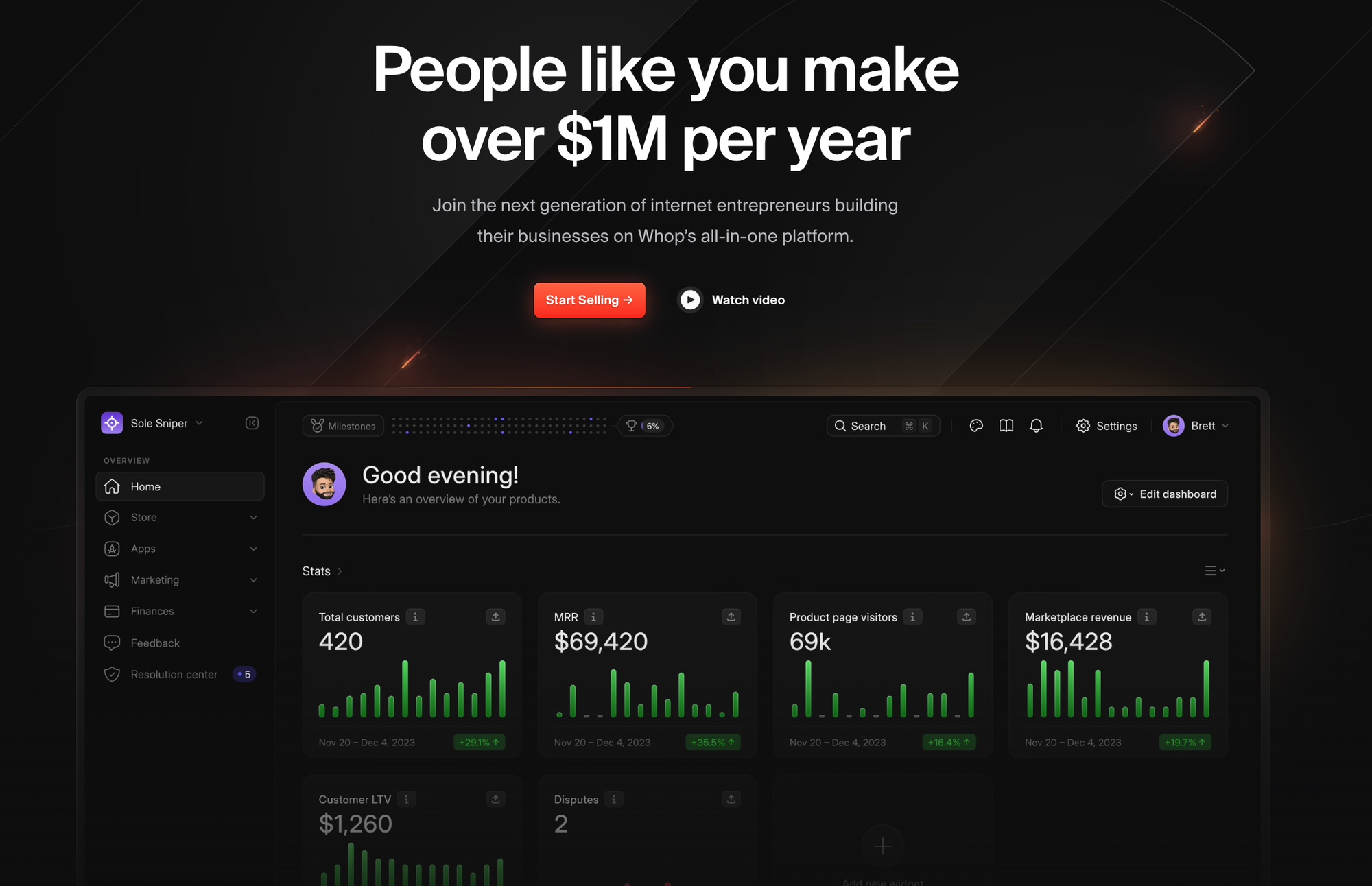
If you're considering launching a SaaS application, choose Whop as your sales platform. With no monthly fees, low commissions, and a huge list of out-of-the-box integration options, plus OAuth and API systems for bespoke products, Whop makes it easy for SaaS entrepreneurs of all kinds to monetize their products.
Sign up today to start selling on Whop's thriving marketplace and turn your SaaS business idea into a steady revenue stream.


